Top 9 Interesting Facts about Iguanas
The biggest lizards in the Americas are iguanas. These exceptionally adaptable creatures may be found in a range of habitats, including as wet swamps, deserts, ... read more...and tropical woods. Here are some interesting facts about iguanas, like their capacity to change color when necessary and their ability to autotomize the base of their tail to run away.
-
The temperate southern regions of North, Central, and South America, the Antilles, the Galápagos, and Fiji are home to a variety of giant lizards collectively known as iguanas. They are available in many different colors and forms, and their sizes can range from 5 inches to 6 and a half feet. Iguanas inhabit trees, rocks, and land. Many of the iguanas live where they do not belong there. Iguanas, which are part of the Reptilia class, come in 45 different species. Iguana habitats can range from wetlands and lowlands to deserts and rainforests, depending on the species.
Iguanas, which are part of the Reptilia class, there are currently 45 living species of Iguana and 1 extinct species. Iguanas inhabit a variety of environments, including marshes, lowlands, deserts, and rainforests, depending on the species. Iguanas are divided into nine different species, including the Galapagos marine iguanas, Fiji iguanas, Galapagos land iguanas, thorntail iguanas, spiny-tailed iguanas, rock iguanas, desert iguanas, green iguanas, and chuckwallas.
Iguanas are some of the biggest lizards found in the Americas and are cold-blooded, egg-laying creatures. The species affects their size, color, behavior, and special adaptations. Some, like the green iguana, by far the most prevalent and ubiquitous iguana species in the Americas, are one of the most well-known species. The Grand Cayman iguana is one of the Iguanidae family's most distinctive members. The largest iguana, sometimes known as the blue iguana, is a beautiful blue-hued reptile. The Galápagos marine iguana, which can swim underwater, is a very rare animal.
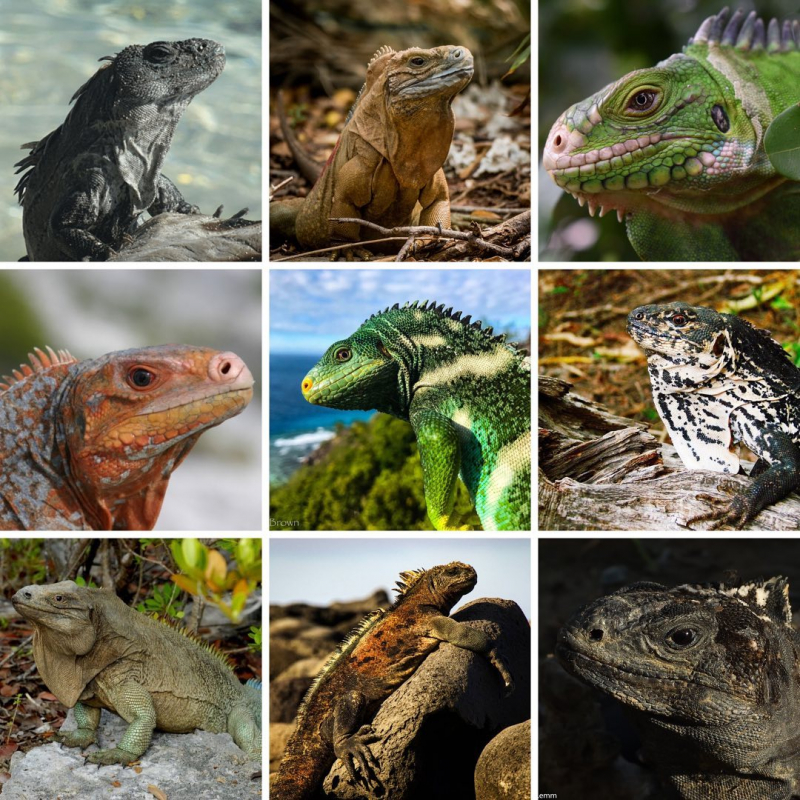
facebook.com Wild Animal Species - youtube.com -
Iguanas may live anywhere from six to more than 60 years, depending on the species. The Grand Cayman rock iguana, which may live up to 40 years in the wild and more than 60 years in captivity, has the longest lifetime. In captivity, most reptiles live far longer than they do in the wild. Green iguanas may live up to 20 years in captivity but only have an estimated eight-year lifetime in the wild. The marine iguana, in contrast, has a brief lifetime of just over six years.
It may take an iguana several years to achieve maturity. The majority will reach their maximum size in around 4 years, but others will grow for as long as 7 or 8 years. It will also develop differently and begin quickly, but after 3-5 years of age, growth will become noticeably slower. It could also temporarily cease growing before starting again.
Their tail makes up more than half of their whole body length. Iguanas may grow as long as 1.8 m when their tails are included. Smaller females may reach weights of up to seven pounds, while adult males may weigh up to nine pounds, with some huge males reaching weights of up to 18 pounds. In addition to having a dewlap, these lizards also have a row of length scales that extends from the middle of their necks to the base of their tails. Iguanas have diverse kinds of scales covering various parts of their bodies.
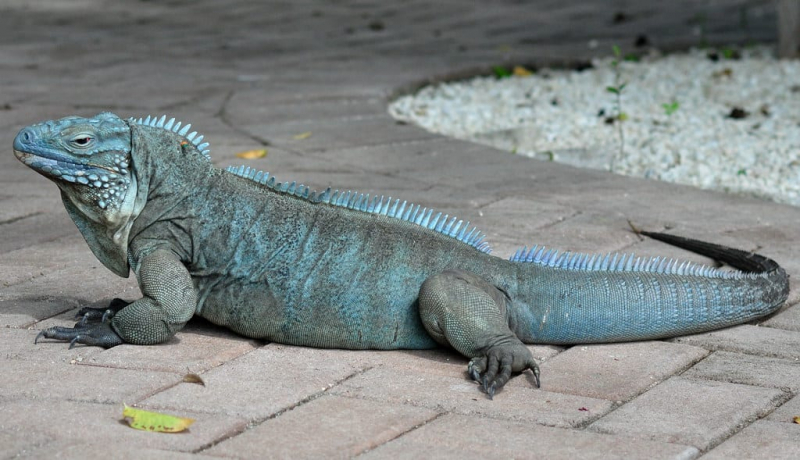
Blue Iguana - reptilescove.com 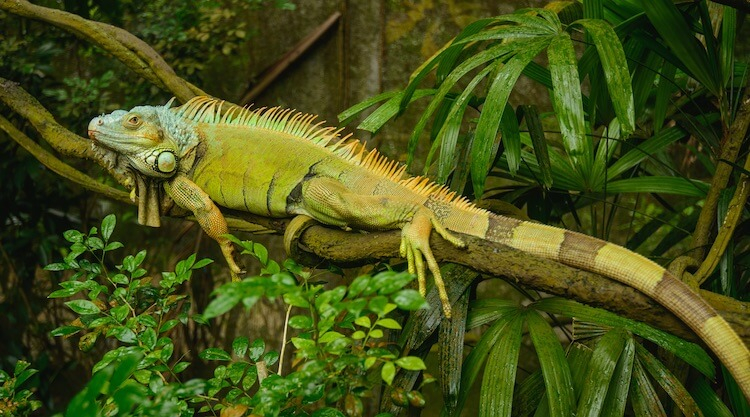
Green Iguana - reptilescove.com -
Iguanas are ectotherms, which means that the temperature of their surroundings regulates their body temperature. Their body temperatures drop, their immune systems are compromised, and their metabolisms slow down when the temperature outside falls too low, making them more vulnerable to illness. They also require enough humidity to be hydrated (at least 60 to 70 percent), as they take in water via their skin. They like sunny days all year long and are quite warm. For iguanas to live, it must be hot. Iguana populations in central and northern Florida are thus rather small. Simply said, it never gets hot enough. Iguanas thrive in the warm climate of the Keys and the Miami region. Additionally, they require direct sunshine to survive. That explains why you frequently see them outdoors enjoying the sun.
The iguanas enter a condition of hibernation once the temperature dips below 40 degrees Fahrenheit because their muscles are practically immobilized. Their metabolism slows down in the cold, and they develop comatose-like symptoms. In the hot, humid tropics of Central America, this doesn't happen frequently, but in regions where humans have introduced them, like southern Florida, an unseasonably cold winter snap might cause a large number of these scaled creatures to lose their hold on tree branches and fall to the ground. Although it's pretty frightening to see, the fall doesn't necessarily portend death. Most iguanas don't have any negative consequences from the fall since they warm up with the temperature. As soon as the temperature rises to a point that the iguana's body can move again, it will regain consciousness.
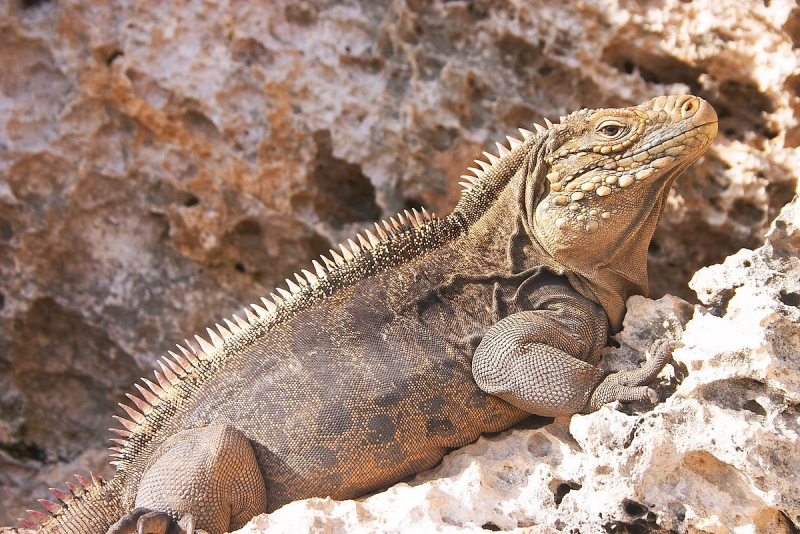
Rock Iguana - en.wikipedia.org 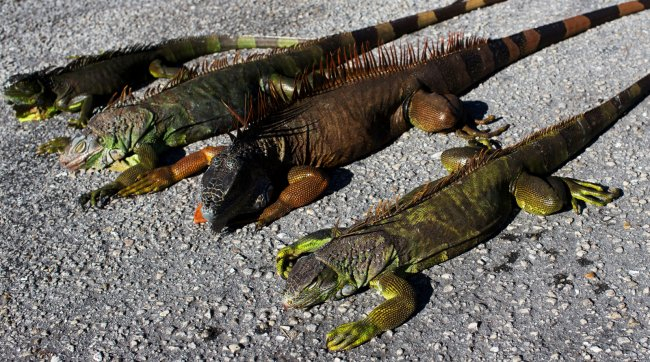
reddit.com -
Iguanas utilize their long tails for balance while climbing and moving around, but they also use them for self-defense. Iguanas will whip their tails to confuse and disorient potential assailants when they come upon a predator or other hazard. When necessary, iguanas may separate their tail from their body. This could occur if they are trodden on, become caught, or get pulled up by their tail. Iguanas can perhaps avoid predators thanks to this survival strategy. When this happens, the tail naturally fractures apart from the body along a line, continuing to move independently of the body, likely to confuse the predator and enable the lizard to flee. In roughly a year, their tails can regrow. After the lizard has exhausted others, this defense is frequently adopted as a final option.
Iguanas inhabit the tops of forest trees. Iguanas in their adult stages live higher up, while juveniles live below. They may readily get sun exposure since they live high in the forest canopy. Except for laying eggs, they seldom ever descend to the forest floor. Although they like woods, iguanas may thrive in open spaces as well. They will dive below the water's surface when near water to avoid predators.
Due to their color, which frequently enables them to blend in with the surroundings and aids in their evasion of predators, these reptiles can be challenging to see. They often freeze when scared, thereby blending into their surroundings, or they run away. Many iguana species have few natural predators, but if one does try to eat iguanas, the spiky spinal combs will make it difficult for the animal to swallow the food. Iguana males engage aggressively toward other males and over basking areas to attract females. Rarely do two people of different sizes engage in physical combat. When conflicts do happen, they may cause serious harm to both parties.
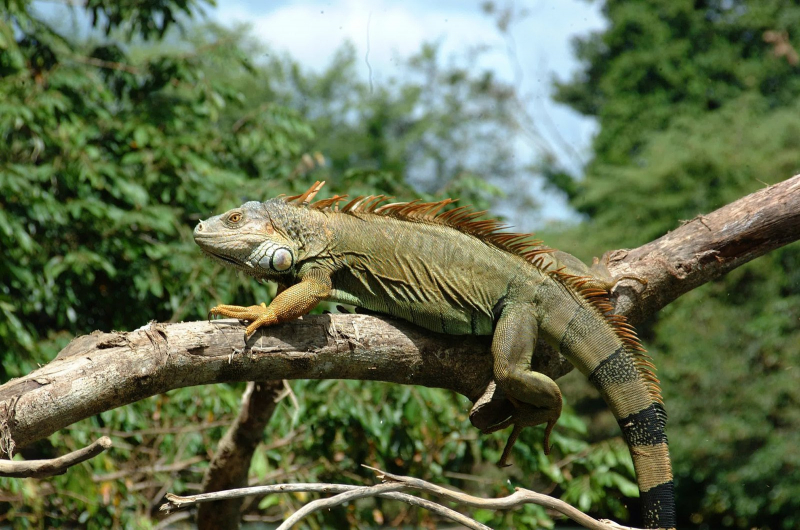
mypetcarejoy.com 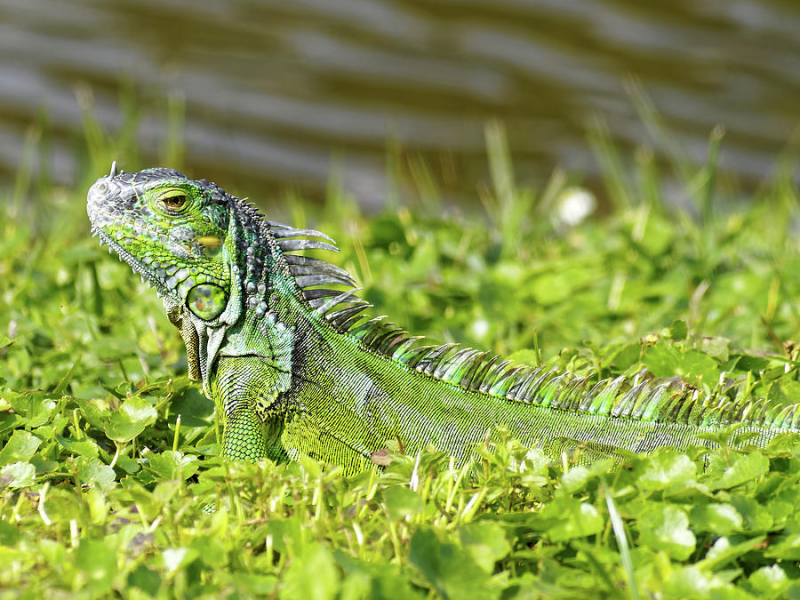
mypetcarejoy.com -
Even though they are omnivores, the majority of iguanas in the wild choose to consume mostly plants. The leaves, buds, blossoms, and fruits of fig trees are among their favorite meals. The baby reptile consumes egg yolk for the first two weeks after hatching. Young iguanas often consume more insects than adults because they require a high level of protein for proper development. They may occasionally consume insects or tiny amounts of carrion, however, they prefer green leafy vegetation or ripe fruits. Iguanas eat a variety of things depending on their environments, such as fruits, green leaves, and saltwater larvae. As folivores, desert iguanas prefer to eat leaves, however, they will also consume flowers and buds. While some marine iguanas dive into the ocean to gather algae from plants.
When iguanas are young, they are omnivores. They mostly eat insects and snails. Some animals have bacteria in their gastrointestinal tracts that enable them to ferment the plant matter they consume. Young iguanas eat spiders and insects in their early years to hasten their growth. But as iguanas become older, their diets become nearly purely herbivorous. The majority of iguana species consume young leaves, fruits, and flowers. They can shred leaves thanks to their strong fangs. These animals bite their meal into pieces that are tiny enough to be swallowed with little to no chewing by moving the food with their tongues. Older iguanas have a diet strong in calcium and low in phosphorus. Iguanas' appetites are suppressed by cold weather conditions. Normal dining temperatures range from 77 to 95 degrees Fahrenheit. The digesting process requires soaking. When these lizards are preparing to deposit their eggs and when they are about to lose their skin, they may cease eating. As they age, green iguanas go to higher elevations and reside in the tree canopy as well.
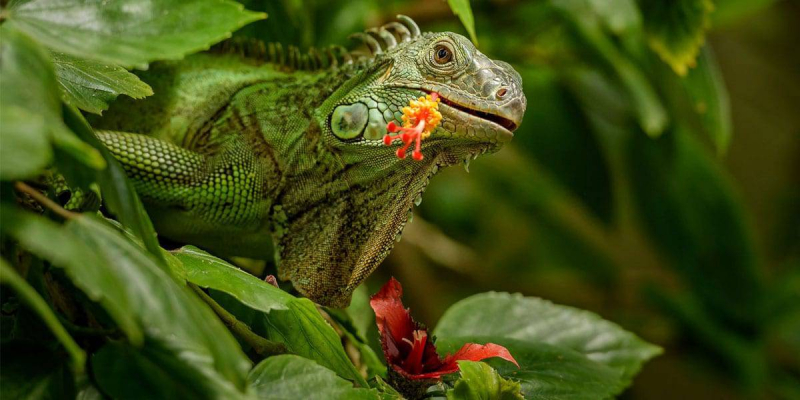
iguanacontrol.com 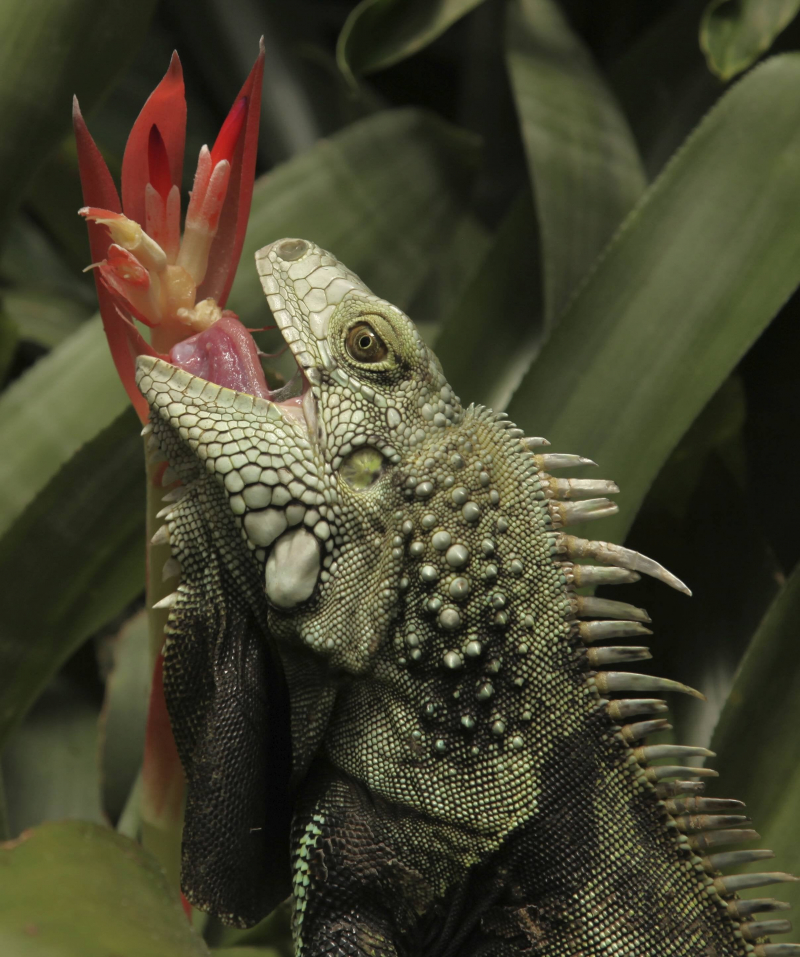
iguanacontrol.com -
Iguanas have excellent vision with their "normal" eyes, so this is just a bonus. The two primary eyes of the iguanas, which also include color vision and distance perception, are quite efficient. The third eye of your iguanas has a lens and retina, much like the other two, but lacks an iris, giving it a distinct appearance from the other two. The third eye is smaller than the other two and has scales covering it as well. This extra eye is not quite like a normal eye, this "third eye" aids the lizard in controlling body temperature. It primarily functions as a circadian mechanism to control the lizard's sleep cycles. Additionally, the third eye's direct connection to your pet's brain increases its significance and allure. Therefore, instead of the optic center where the other two eyes are supposed to convey their alarms, this third eye delivers important messages straight to the brain and pineal gland.
The third eye, which is located at the top of your iguana's skull, operates quite differently from the other two. An alleged "third eye" can be found on the top of iguana's heads, which resembles a scale on top of their skulls. The parietal eye of an iguana has simpler physiology than the other two eyes and is simply able to detect changes in light and darkness which help iguanas anticipate predatory birds approaching from above by seeing abrupt shadows. Since it warns the reptiles of any approaching dangers, it is more than adequate to assist iguanas in avoiding predators.
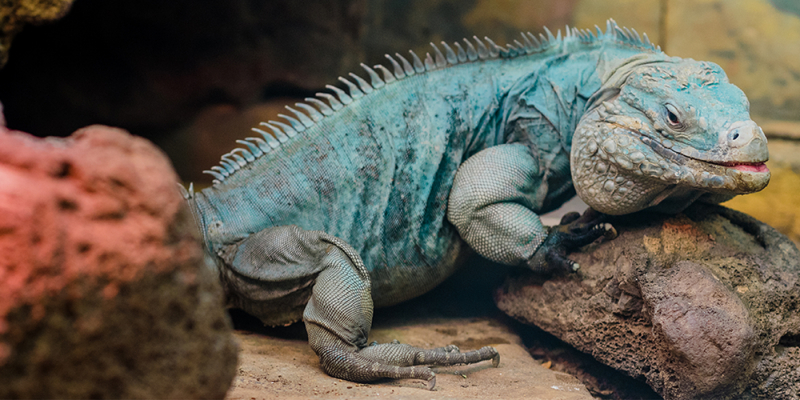
www.iguanafoundation.org 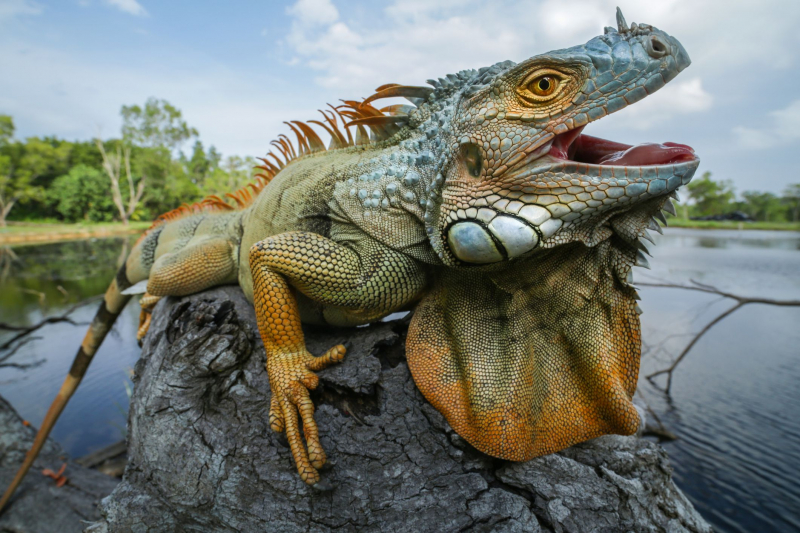
www.iguanafoundation.org -
The majority of the 40 or more species that make up the Iguanidae family are at least able to swim briefly when necessary. Iguanas frequently come down from trees to feed, drink, sun themselves, and mate, even though they are typically arboreal. Iguanas, after all, often flourish in warm, muggy habitats with big amounts of water. These regions include the tropical rainforests of Central and South America as well as several Caribbean islands. They have developed pretty good swimming abilities as a result of the necessity to often cross rivers and lakes. Even animals that don't swim much naturally, such as rock iguanas, can do so in a pinch to reach these locations since they are equally vulnerable to floods and hurricanes. Iguanas are more adapted to swimming since they are longer and more muscular than smaller lizards. However, they prefer to utilize their long, powerful tails as opposed to their legs to go through the water. Many species, including the green iguana, only flick their tails back and forth and draw their legs close to their body to go through the water like torpedoes.
A few different species of iguanas that reside in the Caribbean spend most of their life near water and frequently go swimming for both exercise and feeding. Compared to animals that are more landlocked, these species often have better, quicker swimming abilities. The marine iguana of the Galápagos Islands spends a lot of time underwater and can dive up to 100 feet below the surface. These water-loving marine iguanas frequently visit the ocean to look for food like algae and seaweed to eat. The marine iguana must warm up in the sun after swimming since it has chilly blood. Their dark coloring enhances their capacity to reabsorb heat, which makes them well-suited for rewarming. They can stay underwater for up to 30 minutes, however, they usually limit their underwater explorations to a few minutes.
Lucito - youtube.com Oceana - youtube -
Iguanas use their bodies to communicate. Their motions (stylized walking, strutting, bobbing), utilization of three-dimensional space (where they are in vertical space, seeking height or flattening out), and organization of their body and body parts all contribute to the formation of their words. They may readily converse with other iguanas using this body language. Iguanas have nonverbal communication skills. Iguanas bob their heads instead of creating sounds. Additionally, they move the dewlap, a skin flap located under their necks. Iguanas frequently bobble their heads slowly up and down to acknowledge and greet one another. An increased rate of head bobbing often indicates anger and hostility. They can be displaying their territory.
The iguana is actively trying to intimidate something or someone when the flared dewlap is paired with the towering stance, laterally compressed body, and erect nuchal and dorsal crest. Iguanas should not be approached if they are showing signs of aggression, such as aggressive head bobbing or tail whipping. When dewlaps are relaxed, they flop down and sway when the iguana moves, their dewlap can be extended as a welcome. Males that are wooing ladies will also flap their dewlap. Iguanas often don't produce noises, but they do communicate through body language.
RobinSmall100 - youtube.com Bosveldson - youtube.com -
Several iguana species are vulnerable, endangered, or severely endangered, unlike the green iguana, which is common in both natural and imported settings. With an estimated 192 individuals and a range of little over nine square miles, the Galápagos pink land iguana is considered severely endangered. Rats and wild cats on the island are mostly to blame for the population decline. Due to the detrimental effects of increased tourists to the island as well as changes in the flora and fauna of its natural environment, the Exuma rock iguana, which lives in a popular tourist region of the Bahamas, is severely endangered.
Additionally, the Fiji crested iguana is a critically endangered member of the Fiji iguana family, which is an endangered species. Feral cats and the invading black rat are the main causes of the declining population of Fiji iguanas. Additionally, because of the sharp decline in their habitat of dry, healthy forests in the Fiji Islands, crested iguanas are now considered to be severely endangered. The clearing, burning, and conversion of forests to agricultural land are the causes of this habitat loss.
Several steps may be performed to increase iguanas' chances of survival depending on the locale. The pink land iguana is protected in Galápagos National Park, which it calls home. The Galápagos pink island iguanas' home, Volcán Wolf, is off-limits to tourists, and intensive efforts are being made to eliminate and manage invasive animal species there. The Bahamas' government actively works to prevent residents from moving iguanas from their native cays for use as tourist attractions and educates tourists about the endangered Exuma rock iguana by erecting signage describing the species on the island.
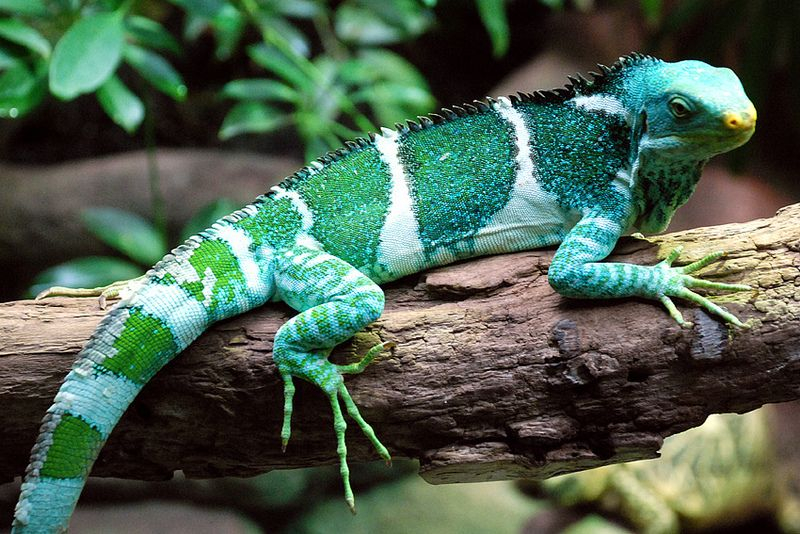
Fiji iguana - www.pinterest.com 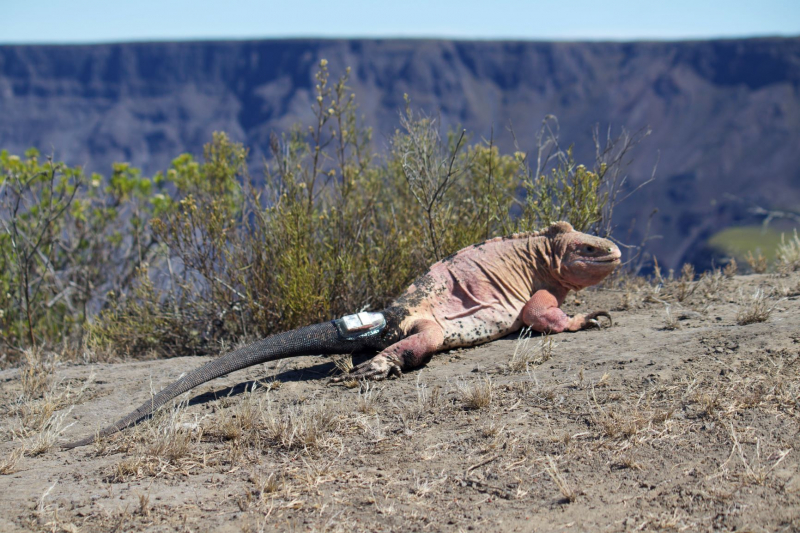
Galápagos pink land iguana - www.pinterest.com






























